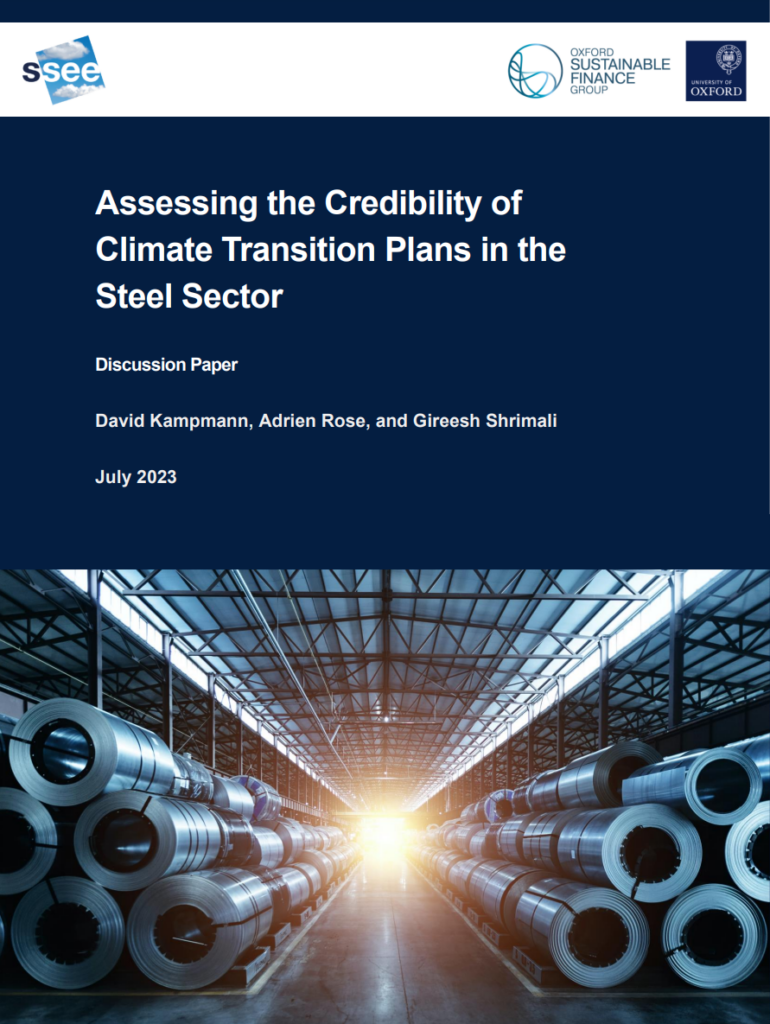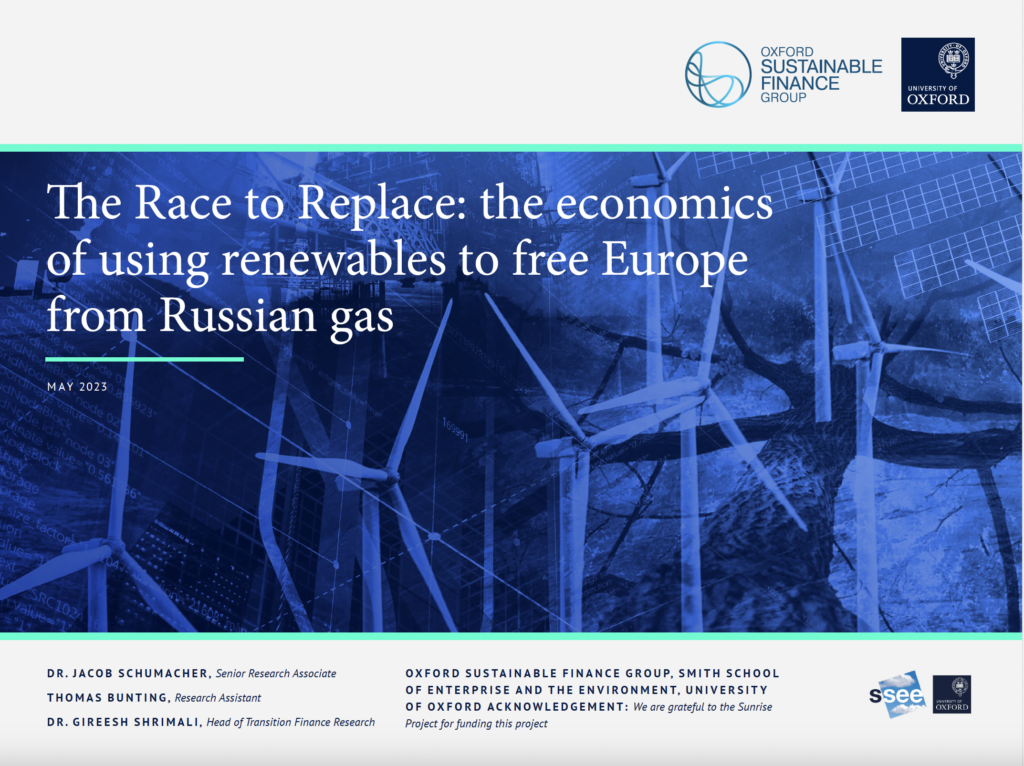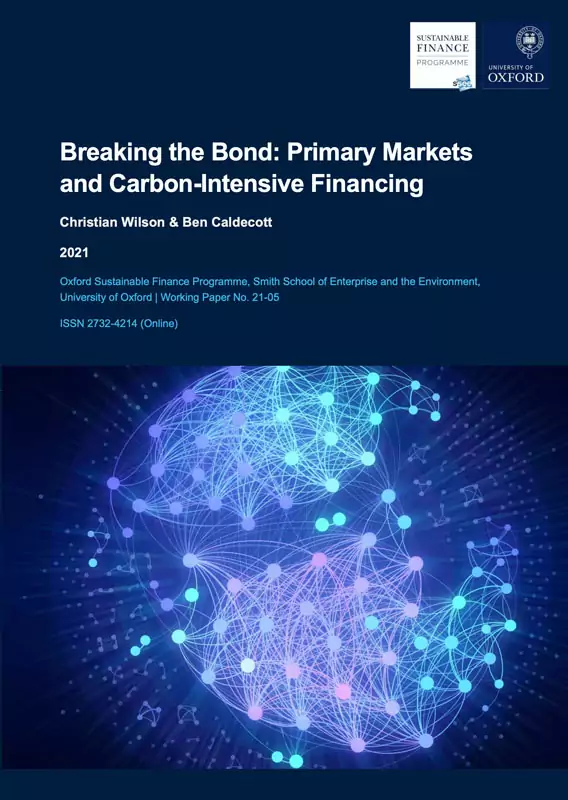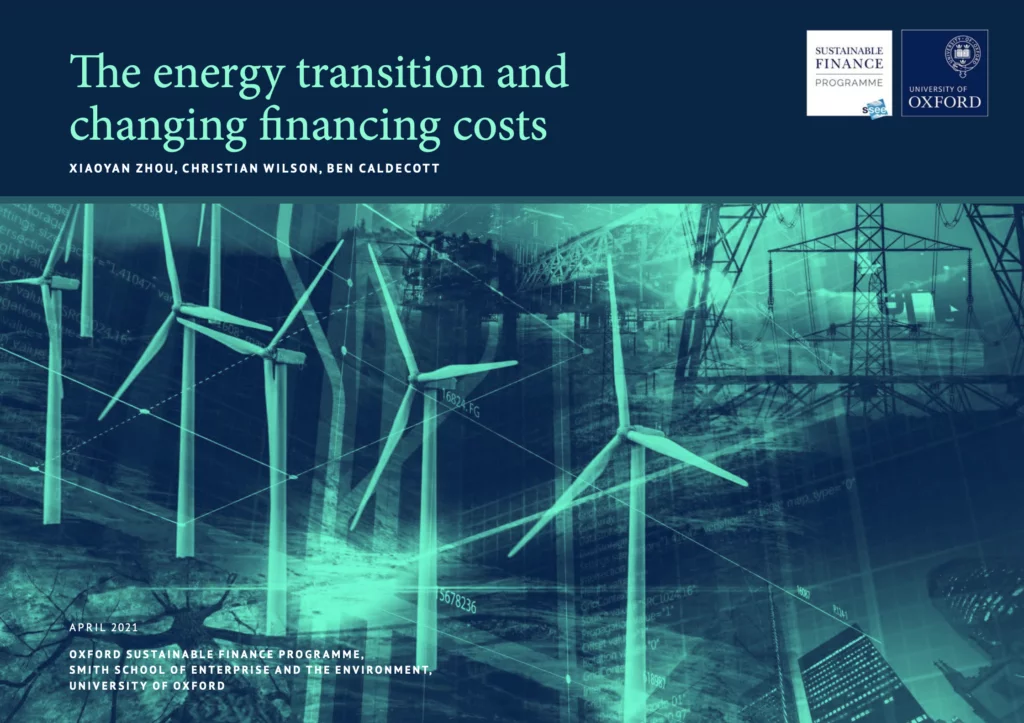Report publications
Home » ETRC – Home » ETRC – Publications
As economies and societies align with net zero, climate-related risks will arise through changes in policy, technology, and market preferences.
These transition risks will have implications for the cost of capital, investment decisions, and ultimately, the operations of companies.
ETRC, starting with the energy sector, and as part of the Oxford Sustainable Finance Group, will be undertaking research on these topics systematically over multiple years. Below are the latest ETRC publications.
Emission and Technology Pathways in the Shipping Sector
FEBRUARY 2024 | Thomas Eysseric-Cravinho, Research Assistant | Adrien Rose, Research Assistant | Dr. Gireesh Shrimali, Head Transition Finance Research
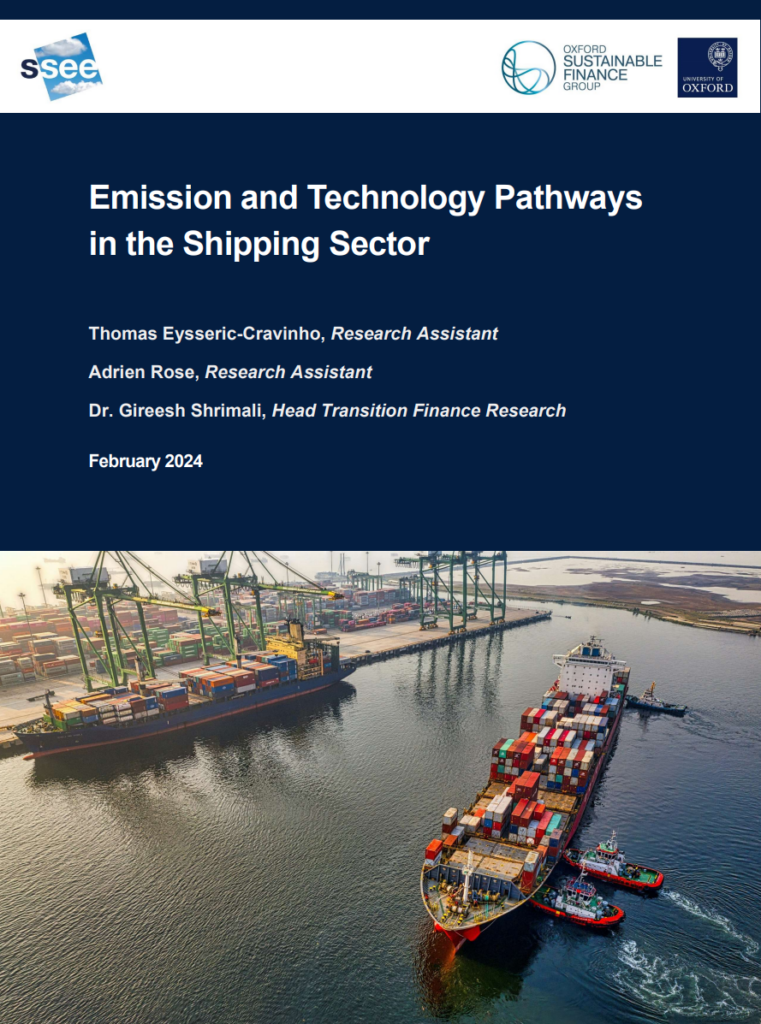
Global shipping accounts for about 3% of global anthropogenic CO2 emissions and, despite a recent relative decoupling of emissions from trade volumes, sustained growth in maritime transport could further increase the sector’s emissions by 90% to 130% by 2050 compared with 2008. Decarbonizing shipping to achieve the Paris Agreement therefore poses a serious challenge to a sector characterized by slow turnovers of fleets, complex port-ship interfaces, and carbon-intensive activities due to the reliance on fossil fuels to power ships. This paper compares four leading emission pathways for shipping and their underlying technology-policy mixes to identify benchmarks for the assessment of the credibility and feasibility of transition plans in the sector.
The oil and gas sector accounts for around half of the world’s energy-related greenhouse gas emissions. For financial institutions, it is now critical to understand which companies have credible and sufficiently ambitious net zero transition plans. This discussion paper details the crucial elements of disclosure needed in the oil and gas sector, the tools available for assessment, and the criteria determining a credible climate transition plan.
It finds that reducing Scope 3 emissions, which account for 80 to 95% of the industry’s emissions, is the biggest challenge for the sector and will require significant reduction in upstream activities and in oil and gas production, with essentially no new exploration or wells. The paper also highlights that oil and gas companies can contribute to the energy system transition by diversifying away from fossil fuels and investing in low-carbon activities.
Assessing the Credibility of Climate Transition Plans in the Aviation Sector
July 2023 | José Luis Reséndiz & Gireesh Shrimali | Discussion Paper
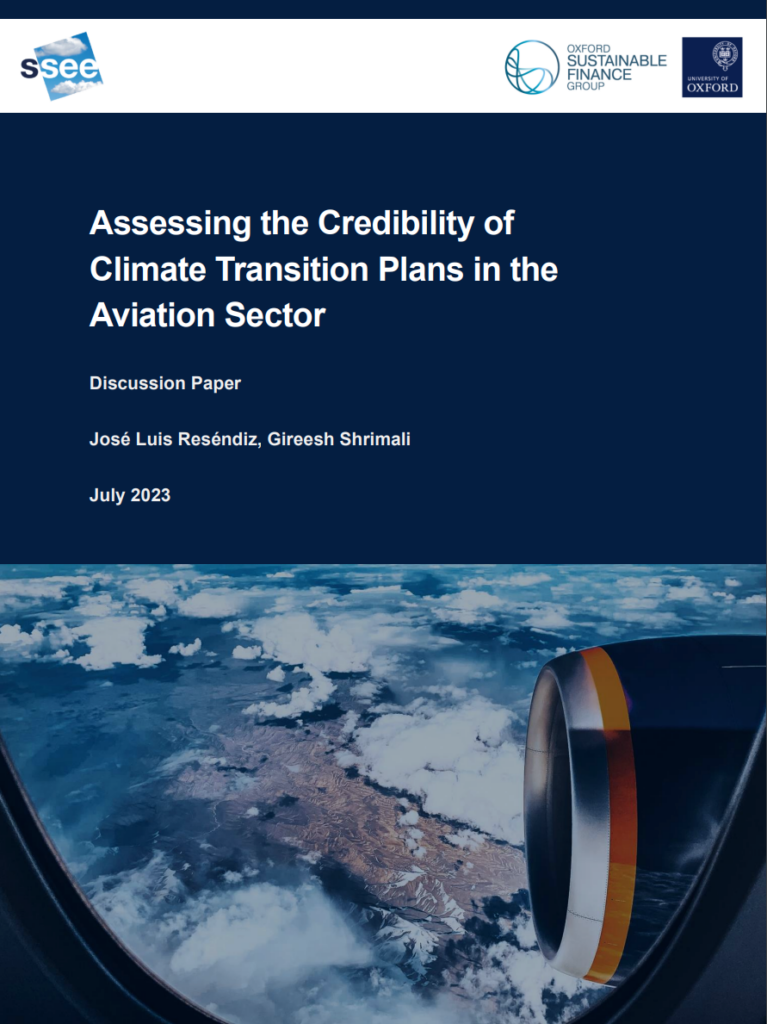
The aviation sector is facing increasing pressure to reduce its climate impacts, but there is currently no established benchmark for companies to follow to achieve net zero emissions. This discussion paper highlights the importance of upholding credibility and integrity in corporate transition strategies. It proposes a novel framework, the ‘Climate Transition Integrity Score’, which can be used to assess the credibility of climate transition plans in the aviation sector and examines the scores of 60 existing companies. The paper also identifies key transition levers for the aviation sector including sustainable aviation fuel, operational improvements, aircraft design and propulsion technologies, and proactive engagement with government and international regulations.
In the steel sector, investment decisions, capital expenditure and technology pathways will be the key determinants of a company delivering on its net zero targets. This paper contributes to current discussions about how to assess steel companies’ plans to reach net zero emissions by 2050 and proposes steel-sector-specific minimum disclosure requirements for credible transition planning.
It finds that reaching net zero in the steel industry relies on three main decarbonization levers, reducing the overall steel demand, increasing secondary production of scrap-based steel, and upgrading or replacing the existing furnace asset base. The paper also highlights that the main technological solutions proposed to largely decarbonize primary steel production – green hydrogen and carbon capture and storage – are not available at a commercial scale and emphasises that steelmakers should commit to exiting unabated coal-based primary steel production.
Assessing the Credibility of Climate Transition Plans in the Power Sector
June 2023 | Xiaoyan Zhou & Gireesh Shrimali | Discussion Paper
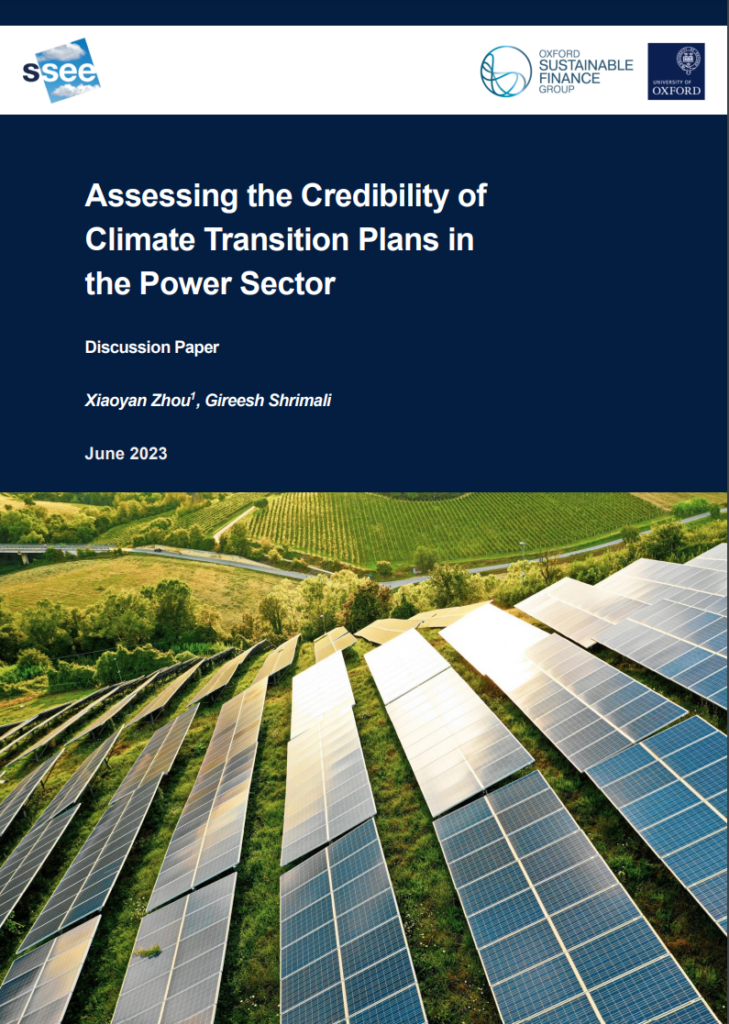
Achieving decarbonization in the power sector is crucial to mitigate climate change and serves as a foundation for decarbonizing other sectors. This discussion paper reviews the existing transition disclosure practices and guidelines for transforming global electricity generation, highlights gaps and limitations, and explores key levers that can help achieve a net zero transition. The paper aims to contribute to an overarching framework for credible transition plans and highlights the complementary nature of emissions transition and technology transitions in the power sector. It finds that engaging with the government and communities – and possessing the necessary skills, competencies, and training throughout organizations – are important indirect elements required to facilitate disclosure and transition.
The EU can replace Russian natural gas with green technologies by 2028, finds a new report from the Oxford Sustainable Finance Group, part of the Smith School of Enterprise and the Environment at the University of Oxford. It estimates that up to 90% of the additional investment required, on top of currently planned European Green Deal spending, could be recouped over the next thirty years by eliminating the need to buy gas.
In response to Russia’s illegal invasion of Ukraine, the EU has implemented emergency measures (RePowerEU) to eliminate its reliance on Russia as a source of natural gas by 2028. The new analysis investigates the cost of fully replacing this gas for electricity and heating with clean energy, rather than substituting supply with fossil fuels from other countries.
Given that Russian gas accounted for approximately half of the EU’s natural gas supply in 2021, this would have a significant positive impact on energy security and decarbonisation, say the authors.
“The transition from Russian gas to clean energy is not only achievable, but offers multiple benefits. Replacing natural gas with wind and solar energy eliminates the need to pay for gas in future,” says Dr Gireesh Shrimali, co-author of the report and Head of Transition Finance Research at the Oxford Sustainable Finance Group.
“By eliminating reliance on importing a fossil fuel with volatile prices and supply, the EU can alleviate energy security concerns, address the cost-of-living crisis through energy costs, and advance its goals to achieve net zero emissions and tackle the climate crisis.”
The report proposes policy changes needed to enable this transition. Crucially, public and private funds must be available to achieve large-scale deployment of renewables and heat pumps. The authors also suggest targeted policy support for investors, including through improved auctions for utility-scale solar and wind and addressing permitting challenges, deploying rooftop solar panels at speed, and increasing support for insulation and the installation of heat pumps.
See Full Report
Investment by Oil & Gas Firms in High- and Low-Carbon Energy: The Effect of Energy-Related Uncertainty and Climate Policy
2 May 2024 | Christian Wilson, Gireesh Shrimali, Ben Caldecott | working Paper
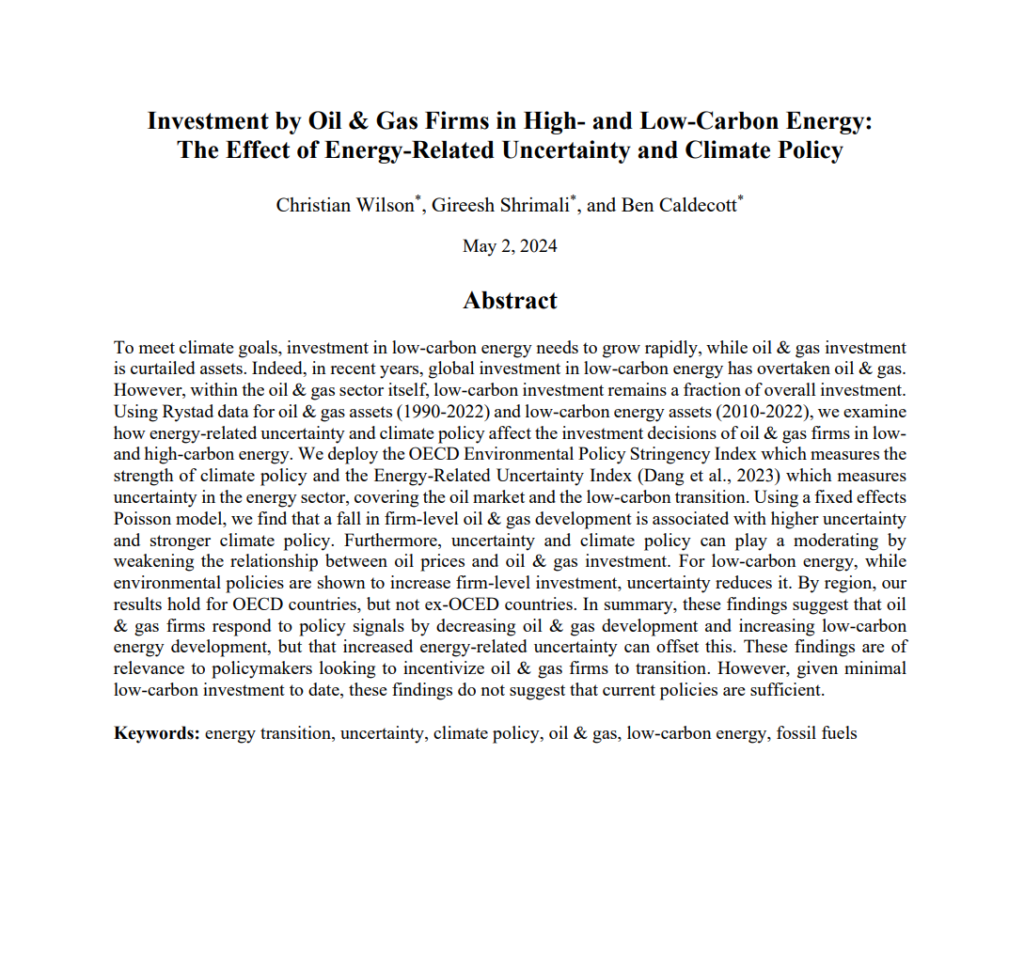
To meet climate goals, investment in low-carbon energy needs to grow rapidly, while oil & gas investment is curtailed assets. Indeed, in recent years, global investment in low-carbon energy has overtaken oil & gas. However, within the oil & gas sector itself, low-carbon investment remains a fraction of overall investment.
See Full Report
Drivers of Firm Investment in Low and High-Carbon Energy: Capital Markets and Climate Policy
14 April 2023 | Christian Wilson, Gireesh Shrimali, Ben Caldecott | working Paper
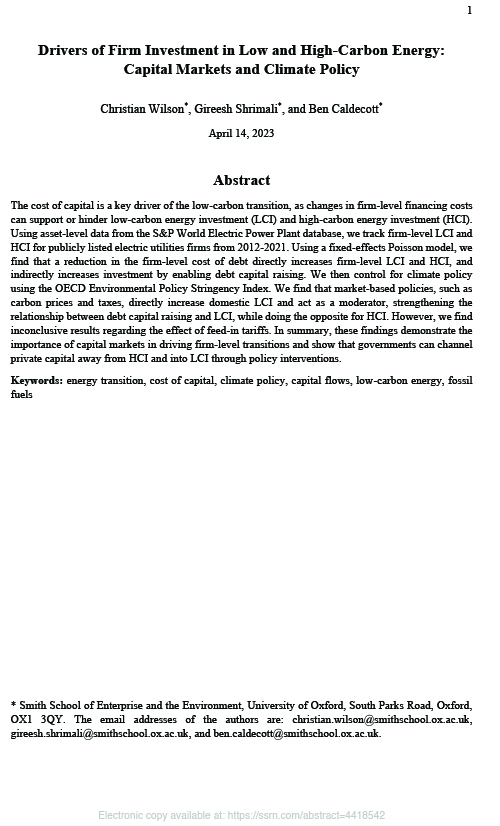
The cost of capital is a key driver of the low-carbon transition, as changes in firm-level financing costs can support or hinder low-carbon energy investment (LCI) and high-carbon energy investment (HCI). Using asset-level data from the S&P World Electric Power Plant database, we track firm-level LCI and HCI for publicly listed electric utilities firms from 2012-2021.
See Full Paper
An Empirical Analysis of Climate and Environmental Policy Risk, the Cost of Debt and Financial Institutions' Risk Preferences
31 March 2023 | Xiaoyan Zhou, Ben Caldecott, Gireesh Shrimali | working paper
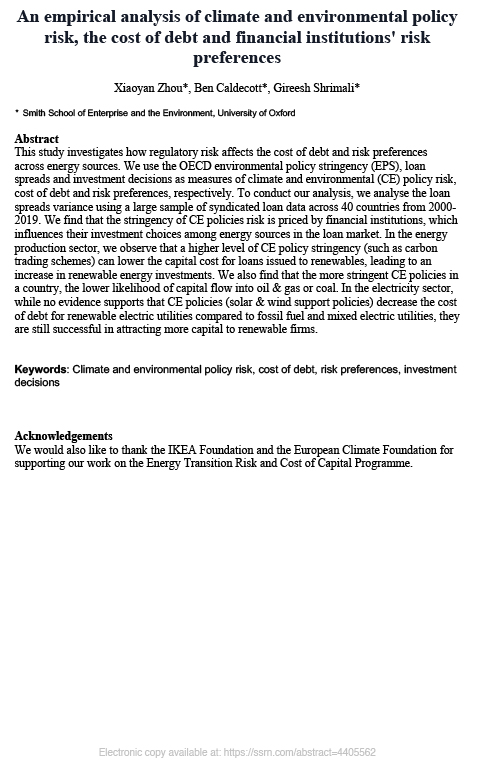
This study investigates how regulatory risk affects the cost of debt and risk preferences across energy sources. We use the OECD environmental policy stringency (EPS), loan spreads and investment decisions as measures of climate and environmental (CE) policy risk, cost of debt and risk preferences, respectively.
See Full Report
Energy Transition and the Changing Cost of Capital: 2023 Review
February 2023 | Xiaoyan Zhou, Christian Wilson, Anthony Limburg, Gireesh Shrimali, Ben Caldecott | Report
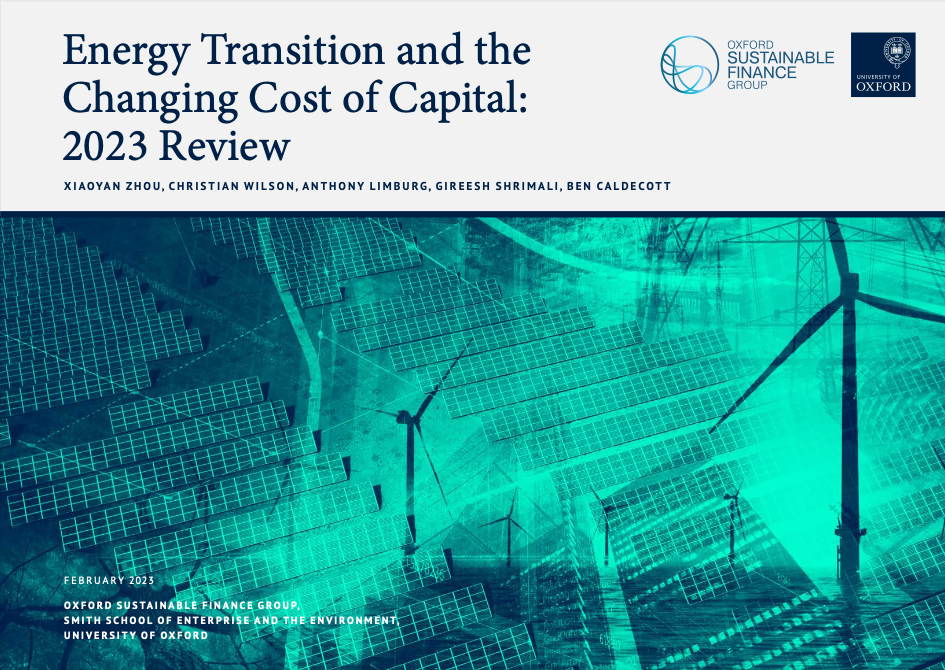
Our 2023 report extends the scope of analysis to the cost of equity as well as expanding our analysis of the cost of debt. In this process, we looked at corporate bonds and included data from other sources, including the Platts World Electric Power Plants Database (WEPP) and the Institutional Brokers’ Estimate System (IBES). We tracked the cost of capital across the global energy system in both electric utilities (renewable and fossil fuel) and energy production (oil & gas, coal mining, and renewable fuels & technology).
See Full Report
Financial institutions with over $70 trillion in assets have so far pledged to achieve net zero portfolios and loanbooks by 2050, including meeting ambitious interim 2030 targets. This working paper reveals that passive corporate bond funds not only hold fossil fuel assets, but directly finance them by buying large quantities of new bonds issued by fossil fuel companies. To track and manage transactions that are channeling capital flows directly into fossil fuels, the authors propose a new metric, Primary Market Carbon Exposure (PMCE). PMCE measures the proportion of securities bought in primary market transactions, for example shares at IPO or new bond issuance, from fossil fuel companies. They find that between 2015 – 2020, 14% of the value of new bond issues bought by U.S. corporate bond Exchange Traded Funds (ETFs) were in fossil fuels.
This report seeks to understand how the cost of debt across different energy technologies and markets has changed over the last twenty years. It forms the first output of the Energy Transition Risk and Cost of Capital Project (ETRC). While climate-related transition risks in the energy sector are sometimes viewed as distant, long-term risks, the impacts of which will not be felt for decades to come, we find this does not reflect reality.
See Full Report


